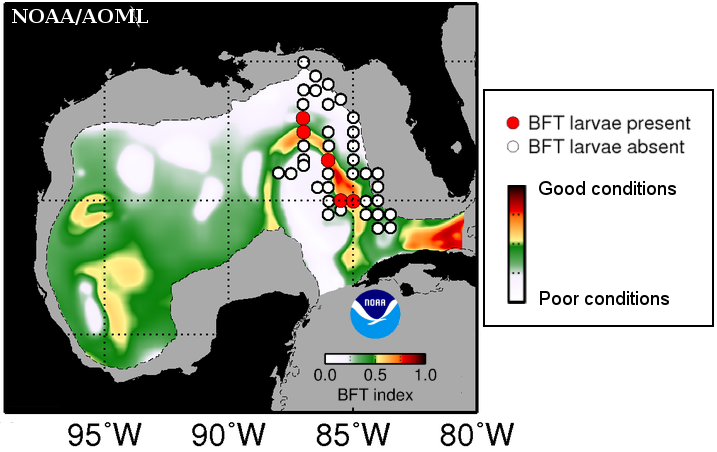The BFT_Index
In a study published on Fisheries Oceanography in 2016 (Domingues et al., 2016), a dimensionless indice to monitor and assess the location of areas with favorable conditions for occurrence of bluefin tuna larvae in the GOA during spring was implemented, the BFT_Index. This index was then used to evaluate the spatial and temporal variability of areas with favorable environmental conditions for larvae within the GOA during 1993–2011.
The BFT_Index combines information about sea surface temperature, and type of mesoscale feature using satellite observations.
